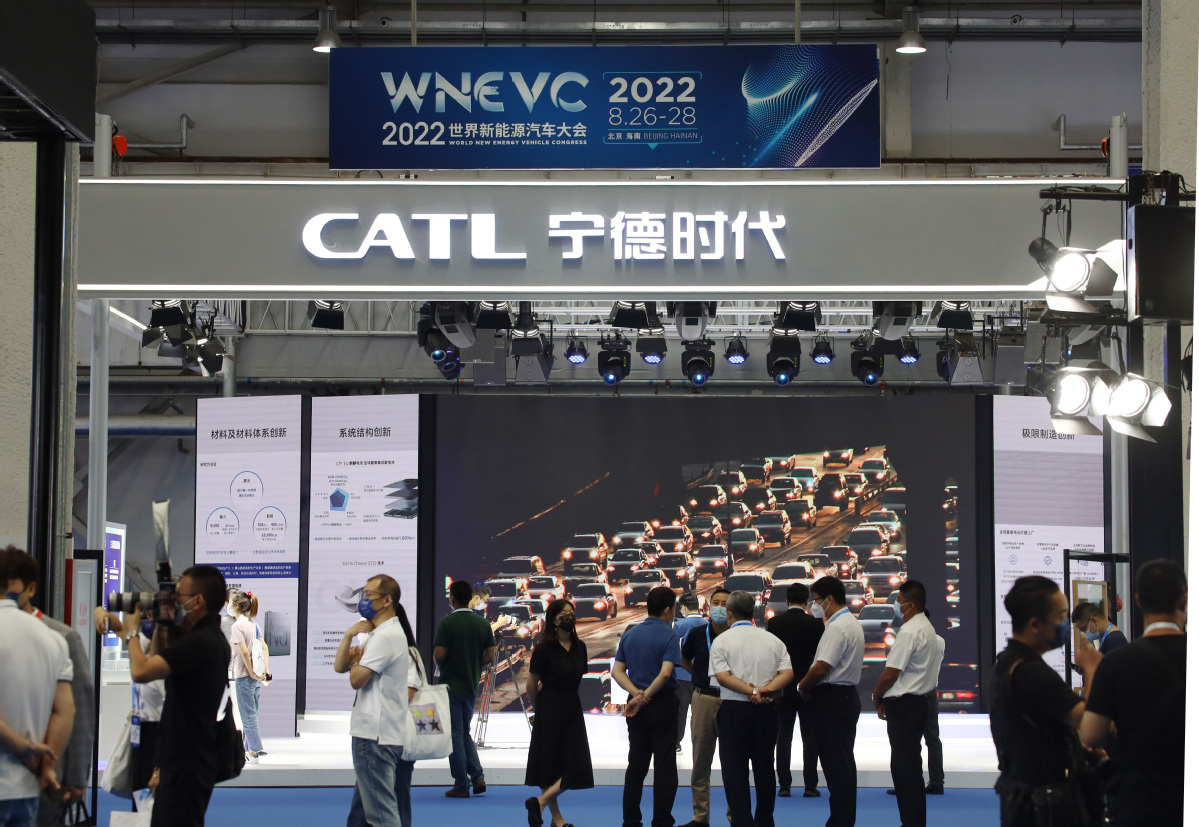
Visitors gather at the booth of Contemporary Amperex Technology Co Ltd (CATL) during a new energy vehicle expo held in Beijing in August. [Photo provided to China Daily]
This is an editorial from China Daily.
The signing of a land pre-purchase agreement between China's Contemporary Amperex Technology Company and the city of Debrecen in Hungary on Monday marks the official launch of the world's top car battery producer's 221-hectare Hungarian plant valued at around 7.34 billion euros ($7.28 billion).
The project, whose construction is scheduled to start this year and be completed within five and a half years, is the largest investment in Hungary's history. The factory, the CATL's second in Europe after one in Germany, is expected to create 9,000 new jobs, and contribute to Hungary's commitment to achieving carbon neutrality by 2050.
Moreover, the landmark project will help strengthen CATL's foothold in Europe given that its customers include major carmakers such as Mercedes-Benz, BMW and Volkswagen. The factory's production capacity of 100 GWh will also cement CATL's dominant position in the global car battery ecosystem, as the world needs battery manufacturing capacity of 1,000 GWh annually by 2025 to meet the target for electric vehicle transition, according to the International Energy Agency.
The project is the fruit of many years of pragmatic Sino-Hungarian cooperation based on mutual respect and Hungary's desire to be the base for Chinese companies in Europe and the main transit route for Chinese goods intended for the European market.
Thanks to its "opening to the East" policy, Hungary has always seen China as an important partner for its own development. It seeks to be the gateway for Chinese investors expanding their presence in Europe, and in 2015 it was the first European country to embrace China's Belt and Road Initiative.
China is now Hungary's largest trading partner outside of the European Union, and Hungary is China's third-largest trading partner among Central and Eastern European countries. The close economic and trade relations have enabled both countries to support each other in areas that go far beyond economic cooperation and trade.
At the height of the COVID-19 pandemic last year, China delivered millions of doses of vaccines as well as face masks and other medical equipment to Hungary to help it through the difficult time. And Hungary stood up against the EU in March 2021 when the bloc imposed sanctions on China for alleged human rights violations, calling the move "pointless, pretentious and harmful".
With the EU reappraising China as "a competitor, even a rival", the good relations between Hungary and China are viewed warily in Brussels. But the goal of China-Hungary cooperation has never been to divide Europe, rather to promote mutual understanding between China and Europe.
The CATL project once again attests to Sino-Hungarian cooperative relationship being a model of mutual benefits and win-win results.

 中文
中文



